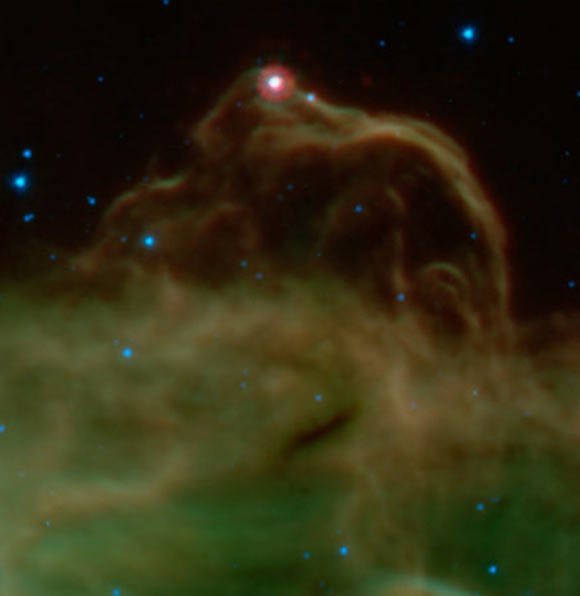NASA’s Spitzer Space Telescope has obtained an infrared image of the Horsehead, a famous dark nebula in the constellation of Orion.

The famous Horsehead nebula of visible-light images (inset) looks quite different when viewed in infrared light, as seen in this image. Image credit: NASA / JPL-Caltech / ESO.
The Horsehead nebula, also known as Barnard 33, was first recorded in 1888 by Scottish astronomer Williamina Fleming.
The nebula is located approximately 1,500 light-years away and is visible only because its obscuring dust is silhouetted against the bright nebula IC 434.
It is only one small feature in the Orion Molecular Cloud Complex, dominated in the center of this view by the brilliant Flame nebula (NGC 2024).
The smaller, glowing cavity falling between the Flame nebula and the Horsehead is called NGC 2023. These regions are about 1,200 light-years away.

This image from NASA’s Spitzer Space Telescope shows the Horsehead nebula in infrared light. Image credit: NASA / JPL-Caltech / ESO.
The two carved-out cavities of the Flame nebula and NGC 2023 were created by the destructive glare of recently formed massive stars within their confines. They can be seen tracing a spine of glowing dust that runs through the image.
The Flame nebula sits adjacent to the star Alnitak, the easternmost star in Orion’s belt, seen here as the bright blue dot near the top of the nebula.
In this infrared image from Spitzer, blue represents light emitted at a wavelength of 3.6-microns, and cyan (blue-green) represents 4.5-microns, both of which come mainly from hot stars. Green represents 8-micron light and red represents 24-micron light. Relatively cooler objects, such as the dust of the nebulae, appear green and red.







